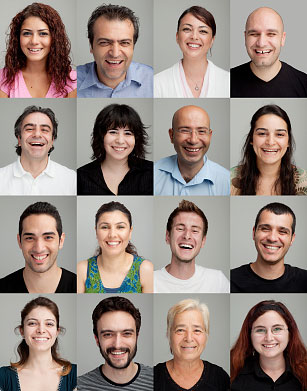Painting a portrait with data
Most people in marketing are familiar with the concept of a persona. The idea is pretty simple. Using known information, research and customer interviews, you create a detailed character that best represents your target. The persona has a name, a photo and a well-developed back-story that makes him more “real.”
 While there are differences of opinion about how much data you need to gather to construct a useful persona, at its simplest level, you are taking an abstract representation of your target—female, 18-34, income greater than $30,000—and turning her into a “person” you can consider when developing marketing messages and new product offerings. Here’s an example:
While there are differences of opinion about how much data you need to gather to construct a useful persona, at its simplest level, you are taking an abstract representation of your target—female, 18-34, income greater than $30,000—and turning her into a “person” you can consider when developing marketing messages and new product offerings. Here’s an example:
Stacy Jones is 24. She recently graduated from college and moved to the city. She shares an apartment with two roommates in a newly gentrified neighborhood.
Stacy is working for a national retail clothing chain while she looks for a job in her field. She really enjoys the interaction with customers and gets a lot of satisfaction helping people fine-tune their style and create the perfect outfit.
Stacy is very social. She is constantly sharing photos with her 300-plus Facebook friends, but doesn’t get why people would waste time on Twitter. With limited income, Stacy also spends a lot of time online looking for the best deals on designer-label clothes.
Stacy likes trying new things and having new experiences. Even with limited resources, she feels it’s important to experience what life has to offer …
You should have as many personas as you do meaningful targets. You can get as detailed as you want. The idea is to identify relevant patterns that are present across your target audience, and flesh those out in a personal description.
Often times, the process of developing personas reveals important differences within a target group that allow for multiple, more meaningful segments to emerge. Armed with a persona, you can now consider how Stacy—rather than a “female, 18-24, income greater than $30,000”—would react to new ideas or product offerings.
Why use personas for social media content creation?
Marketers have been using personas for advertising and product development since the 1990s, but they have an important new role in social media. It is becoming clear that using social media to simply broadcast marketing messages is not an effective use of the channel. The key to success in social is to garner engagement from your customers.
Social media is online word-of-mouth. People interact with content that is interesting, funny, entertaining or helpful to them. It’s hard to create content that will resonate with someone if you think of that person simply as a customer or some other demographic segment.
What do “white-collar men, 35-54” click on and share with their friends and colleagues? It’s hard to say, but “NASCAR Bob,” who owns a manufacturing job shop in the Southeast and is always looking for ways to help his employees make metal parts more efficiently, would probably share a link to an online tool that helped him figure out how to cut aluminum faster. He would also likely be interested in stories about companies using automated production processes to win business from offshore competitors.
Boost engagement or risk becoming invisible
On a more practical note, engagement is becoming vital to securing visibility in some key social properties. Facebook’s Edge Rank algorithm weighs interaction—clicks, likes, sharing, viewing—very highly when determining if and when your post will be visible in your fans’ news streams. Since 85 percent of people who “like” a company page never return, triggering interaction has become important for enabling ongoing visibility.
This makes creating truly relevant, share-worthy content for your customers and prospects more critical than ever. Evaluating your ideas against a persona can help your team come up with great new content that may not have otherwise occurred to them—content Stacy and NASCAR Bob will be excited to receive and share with others.
What about you? Are you using personas as a tool for creating more engaging, share-worthy content? I’d love to hear your success stories (or missteps) related to using personas for social media.
David Fabbri is Creative Director of LoSasso Advertising Inc., a Chicago based interactive agency specializing in content marketing strategies and customer acquisition for leading B2B and consumer brands. (See more posts by David)


